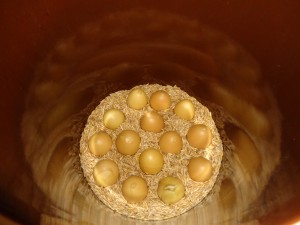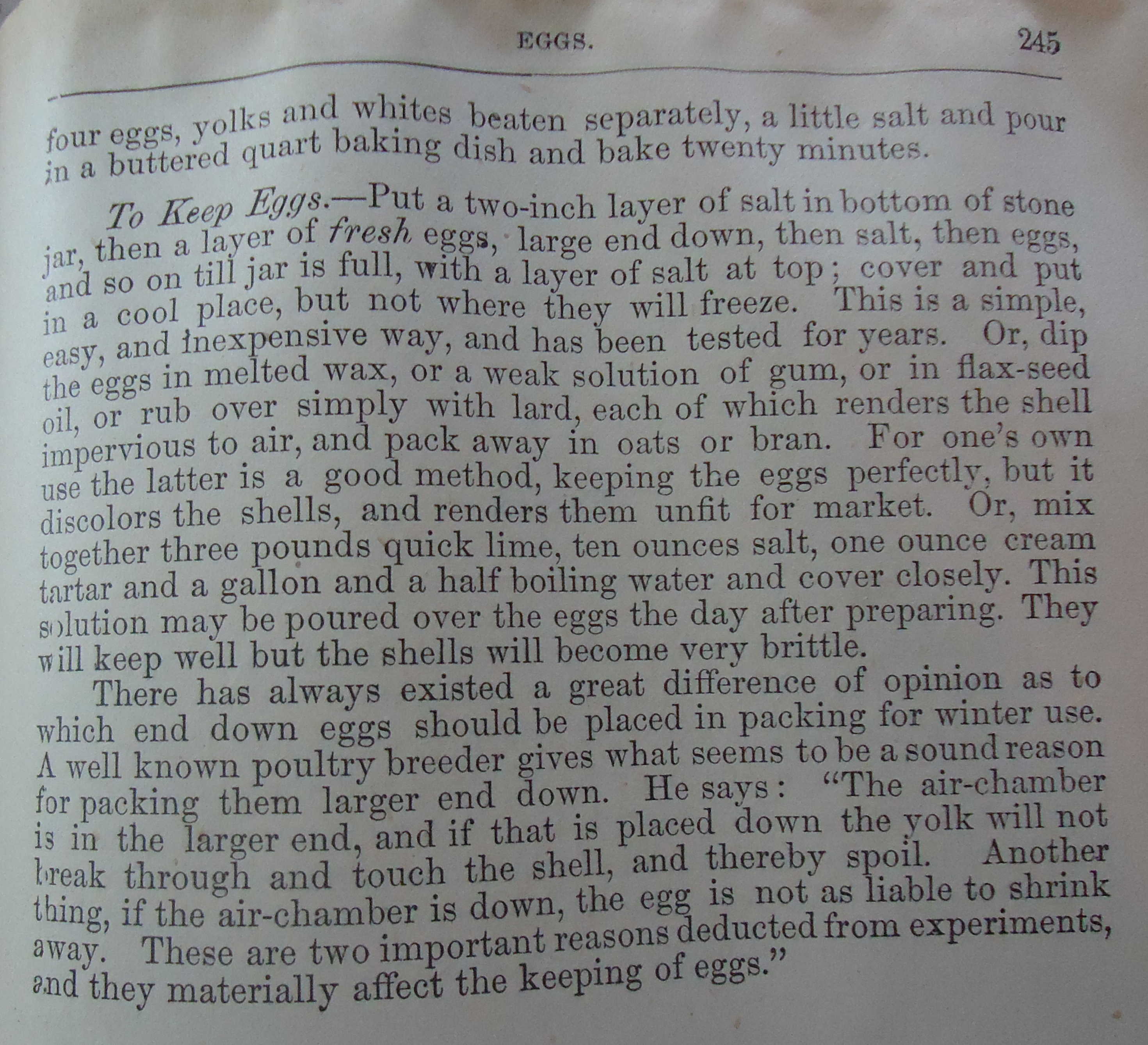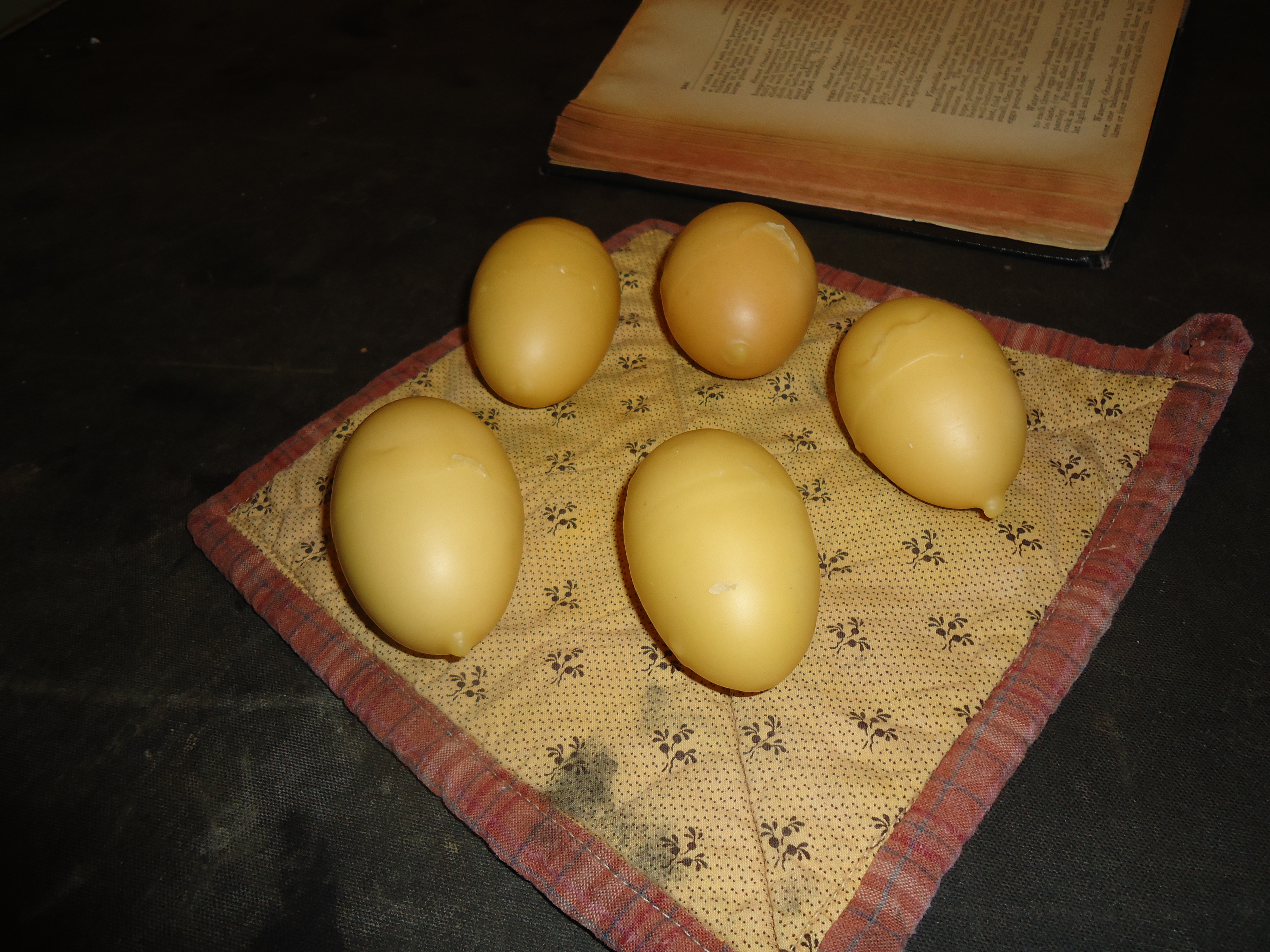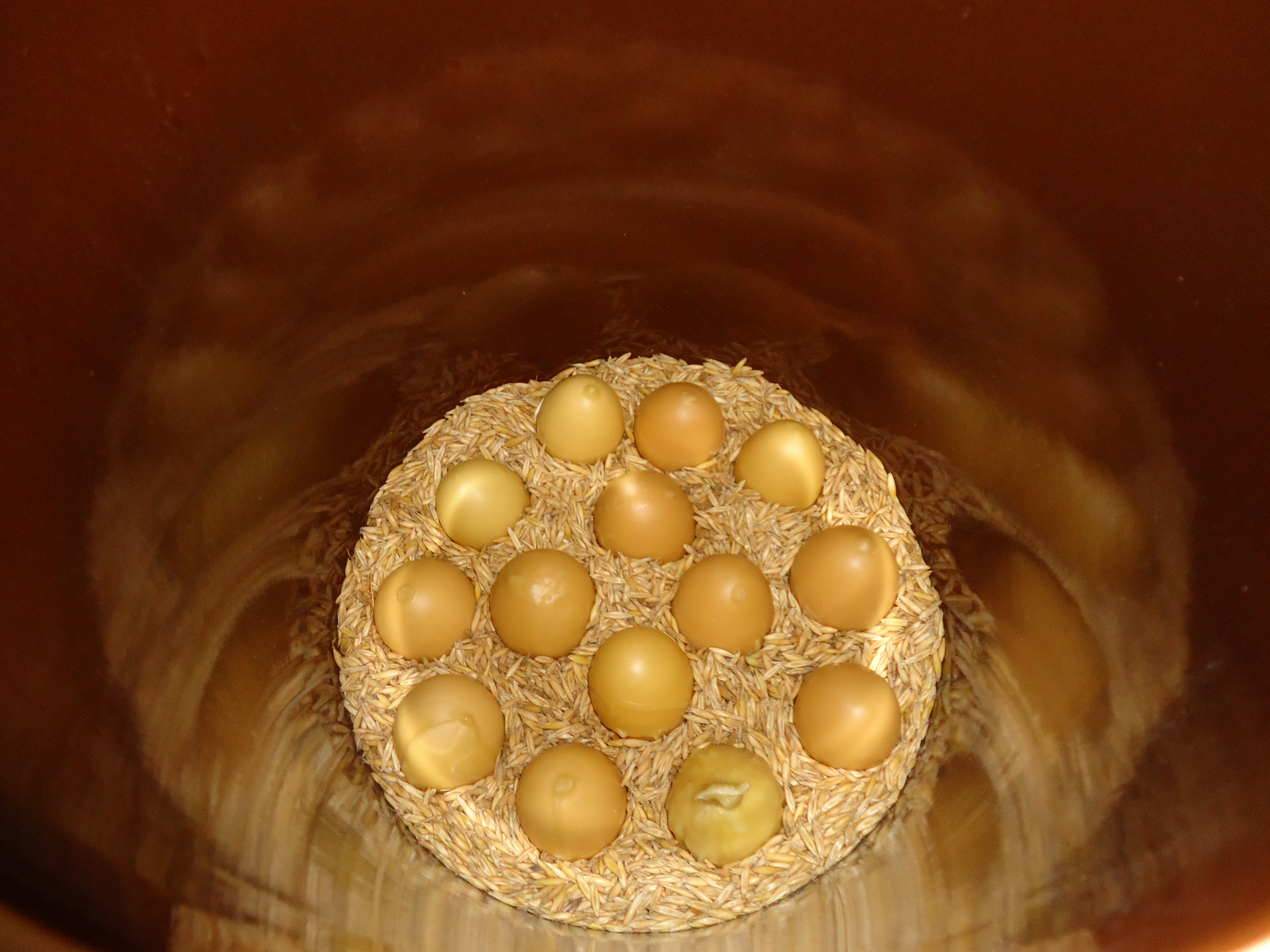What is a broody Hen?
Good question. A broody is a hen who wants to hatch eggs and be a mother. Not all hens ‘go broody’. I noticed Winnie exhibiting the tell-tale behavior. When she continued to sit in her nest box all day, long after all the other chickens had gone out foraging for feed and just doing what chickens do during the day, eating, taking dust baths, exploring, egg laying, etc. So I turned to my new favorite chicken book, “The Small-Scale Poultry Flock” by Harvey Ussery for some suggestions on how to manage a broody hen.
Harvey told me I should build her a separate broody box where she can be quietly left to the business at hand without any interference from the other chickens. So I did. The next instruction I followed was to select ten to fourteen of the finest eggs from the flock and at night time put those eggs underneath her. And viola, my broody hen was sitting on her first clutch of eggs! I was so proud! Winnie is a blue laced red Wyandotte; that is a large breed, so she can handle a big clutch.
Now of course those eggs have to be fertilized. I have one rooster, Clark, with my flock of twelve hens so I thought I was covered for egg fertilization. Harvey mentioned in his book that rooster sperm is viable in the hen for two weeks but in the end I determined that Clark has some fertility issues. At the same time that I set Winnie on her clutch of fourteen eggs I also gave three dozen of my fertilized eggs to a friend who planned to use an incubator to hatch them. I did not know at the time that I was creating a control to the egg hatching experiment.

Winnie the Broody Hen in her box
So Winnie sits for weeks and weeks and weeks
It is usually about three weeks for the eggs to hatch. Rarely is there 100% hatching. So I was prepared for some mishaps along the way. Around ten days I candled the eggs to try to determine if anything was growing inside them. Having never done that before I was not quite sure what to do and what I was supposed to be looking for. I will know better next time. Around eleven days I found the first broken egg and a stink. I cleaned up that mess. This happened many times. Good old Winnie, she would let me take her out of the box, take out the eggs and change the straw and clean up. I did all that with swiftly so they eggs would not cool off.
The big day came and went…..
After three weeks she only had about four eggs left; ten of them had broken and been very foul. I let her sit for a few more days with a hope for success. No luck. On day 24 she only had one egg left underneath her, but she still sat and sat and continued to be very broody. I contacted my friend with the incubator and discovered that she had very little hatching success. In her controlled environment of an incubator she had 3 of 36 eggs hatch. This is why I think Clark the Rooster has very low fertility. Two separate environments yielded very very poor results; more on Clark later, because all is not lost.

Clark the rooster and Winnie the Broody Hen, before she went broody. At Hillside Homestead in Suttons Bay, Michigan.
Could she still be a mother Hen?
I had some good friends staying and working with me during this bitter end of the hatching period. We discussed it and decided to order some chicks from Murray McMurray hatchery and that we would try to graft the chicks on to Winnie, i.e. lets hope Winnie takes these new chicks under her wing and adopts them! So the timing of all this was tricky because I had to be gone to pick up pigs for the farm. I did not want to leave the farm with baby chicks around (farms keep a tight hold on their occupants and their time.) So I had to keep Winnie sitting in her box, to do that she needed more eggs to sit upon: she needed decoy eggs. I cleaned up her box again and sacrificed four more eggs to place underneath her to help encourage her to be broody. By the way there was one egg left from the original clutch. I took it out and carried it far afield for disposal. I set it down on the ground and tapped it lightly with a shovel and it had a mini-explosion, rotten to the core.
Waiting for the next big day…
Fifteen new chicks are due to arrive in the mail on Monday June 3. I plan to graft them on to Winnie as instructed by Harvey in his fabulous book! He recommends keeping them quiet and warm in their box during the day and then when night comes put them under the broody hen and remove the decoy eggs. I hope this works. If it does work Winnie will rear those 15 chicks, keep them warm and protected, help them learn to eat food and drink water. Perhaps the most important job she will do is to socialize them into the flock. Oh goodness I am excited about this. So you will have to stay tuned for Part 2!
Why Clark is great
Clark is a great rooster. I am disappointed that he appears to be infertile. But he is a great protector. He watches out over all the flock and protects them. This spring I have had several hawk attacks and Clark is very good at alerting the hens to the danger. He makes these incredible, low, guttural sounds that indicate danger and the hens quickly take cover when they hear it. He treats the hens well and protects them. So at the current time I have no plans to cull Clark from the flock.
In the past I have had multiple roosters and that was problematic. In the new batch of chicks there could be a few roosters, Clark’s replacement might be in that batch. Only time will tell. I admit I have gotten a bit attached to Clark, he is so handsome, has a likeable personality, he is not aggressive with my guests and he takes care of the hens. It is disappointing we will not have any Clark off-spring.
Other fun details if you still want to read more
- Most hens don’t go broody because that characteristic has been breed out of modern chickens. When a hen goes broody she stops laying eggs, because she is going to get one big clutch put together and just sit on them and hatch them. For those with large egg laying concerns/factories, this is a problem. They see it in the short term as a great reduction in productivity. It is a bit unusual today to get a broody hen. That is why I really want Winnie to be successful and raise some of her own off-spring. She has the broody gene and it should be carried on at a small operation like I have! Maybe next year she will be able to hatch some of our home grown eggs.
- I ordered fifteen new chicks. Nine of them are Light Brahma hens. Six of them are Dark Brahmas as a straight run. When one orders chickens you can order hens for a premium price, roosters for the cheapest price and a straight run as a middling price. When you order a straight run the birds are not sexed so you are not sure what you are going to get. Dark Brahmas are more expensive than Light Brahmas so I took that economical route with them. For example right now Dark Brahma hens are $5.29 each, Dark Brahma roosters are $3.17 each and Dark Brahmas as a straight run are $3.99 each. Brahmas are older breed of bird. They were quite popular from about 1870 to 1920. They are the quintessential dual purpose bird; they are good for meat and eggs, but not great for either. They take 6-9 months to come to maturity and to lay eggs. But it was a very common breed 100 to 150 years ago. They are very hard for the cold snowy winters that we have here on the Leelanau Peninsula. They can be productive for a longer period than modern chicken layers.
- Broody hens need our help to hatch eggs. Because humans domesticated chickens so long ago and changed their behavior to suit our needs; the hens need our help to reproduce. Normally a hen lays an egg ever day or every two days. She could not put together a clutch quick enough. So we can help her out in that effort. Harvey had a great section in his book about working with Broody hens and helping you understand their behavior and how you can help them succeed. I love that book!









